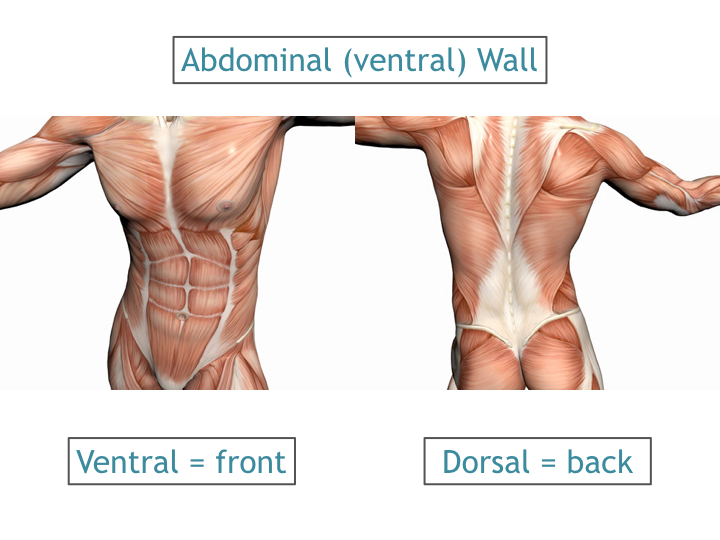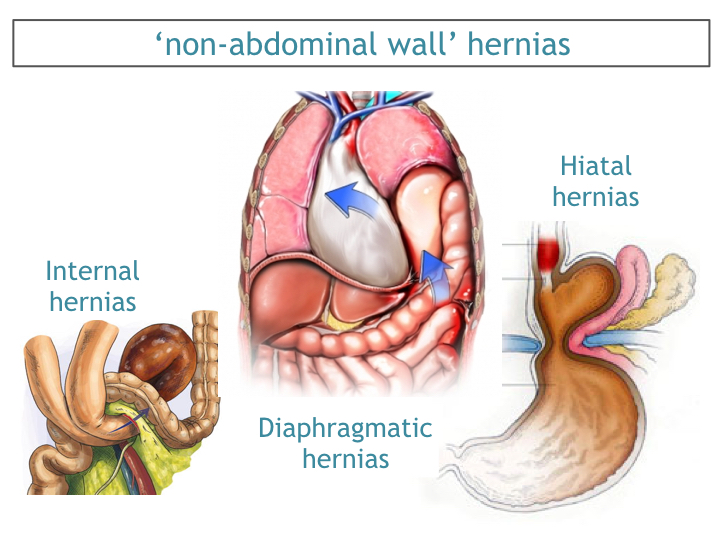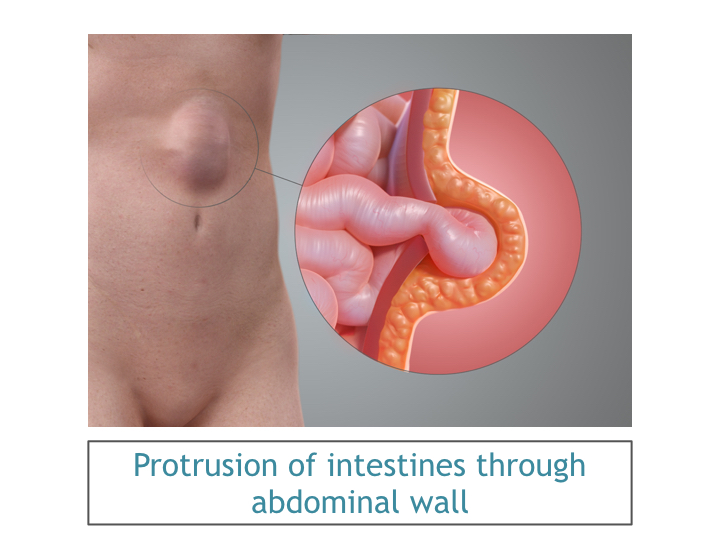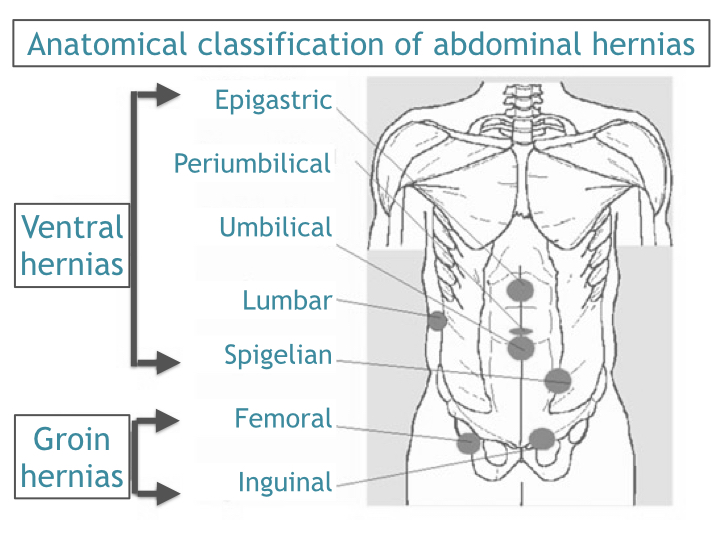Loading...
The abdomen (belly) is a complex body space that lies between the chest and the pelvis. It contains several organs that make up the digestive, urinary and genital systems. It also houses the essential parts of the vascular, lymphatic and immunological systems. All these are encased within by the abdominal wall.
The main function of the abdominal wall is to form a firm, flexible wall which keeps the abdominal viscera in the abdominal cavity. It protects the abdominal viscera from injury, maintains the anatomical position of abdominal viscera against gravity. I assists in forceful expiration by pushing the abdominal viscera upwards and is involved in any action (coughing, vomiting) that increases intra-abdominal pressure.

The front of the abdomen is called its ventral surface (venter is latin for belly), and the back is commonly referred to the dorsal surface (dorsum is latin for back).
What is an Abdominal Wall Hernia?
It is a weakness or tear in the abdominal muscles of the anterior abdominal wall, which allows the intestines, fatty tissue or an organ to protrude through this defect. The inner lining of the abdomen (peritoneum) pushes through the weakened area to form a sac. A loop of intestine or abdominal tissue can then slip into this sac causing pain and other potentially serious health problems.
What are the types of abdominal wall hernias?
Abdominal wall hernias are broadly classified as Ventral hernias and Groin hernias. The ventral surface is the front side of the abdominal wall, and all hernias of the abdominal wall are commonly clubbed together as Ventral hernias. This does not include inguinal, femoral or obturator hernias, which all fall in the category of Groin hernias.
Where do hernias occur?
Besides the abdominal wall, hernias can occur inside the body cavity as well. Loops of the intestine can herniate inside the abdominal cavity between themselves and their attachments. These are called Internal hernias. The diaphragm is a muscular partition that separates the chest cavity able from the abdomen. Herniation can occur through defects in the diaphragm and are called Diaphragmatic hernias. The hiatus is an opening in the diaphragm that allows to food pipe (esophagus) to pass down into the abdomen just as it enters the stomach. Herniation through the hiatus are called Hiatal hernias.



